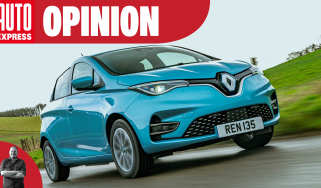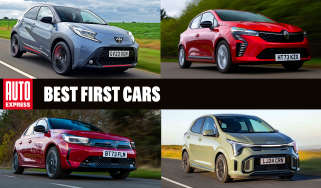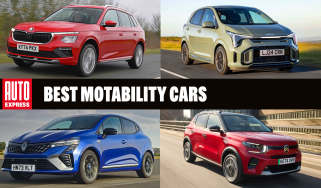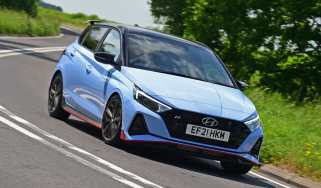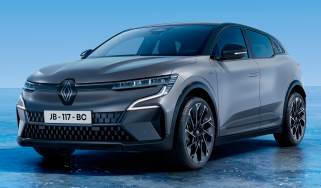New Renault Clio to shun electric power and stick with petrol and hybrid options
Renault’s sixth-generation Clio hatchback will get a clean look and hi-tech kit, and our exclusive images show what it could look like
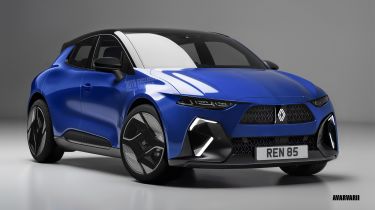
Next year’s Renault Clio will launch the brand’s curvy, new “Latin” look, rebooting the supermini’s sporty, iconic status in a bid to keep it riding high in the small car sales charts. Our exclusive images preview how the new model could look.
Reviving two “legendary icons” – the electric Renault 5 small hatch and 4 SUV – has given the French brand the opportunity to modernise the designs of its “future icons”, Renault Group’s design director Laurens van den Acker told Auto Express.
And the Clio – launched 35 years ago, and about to enter its sixth generation – is one of Renault’s three icons, along with the Scenic and Espace, which together popularised the multi-purpose vehicle in Europe.
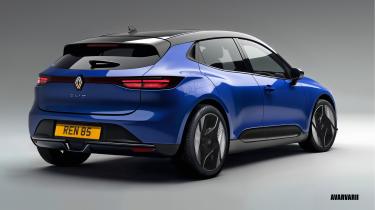
“Our intention is to produce design icons – though that will only be decided in 30 years’ time,” said Gilles Vidal, the Renault brand’s design boss.
“With the Clio next generation, we can do very modern-looking, sensual Latin cars,” added van den Acker. “We can push the sexiness, the sensuality and make these cars look very desirable in a modern way.”
This twin-track approach to the product portfolio – legendary icons and future icons – underpins all aspects of the manufacturer’s product planning, from design to vehicle platform to powertrains.
Customers of the R4 and R5 can only choose electric power, but the 2026 Clio will stick to petrol/hybrid power. “[This strategy] allows us to have a double offer which is very clear for customers, and the two don’t cannibalise [each other’s sales],” said the group design boss.
“It wouldn’t make sense to do a 100 per cent EV Renault 5 and Clio. We want to be careful not to create vehicles that overlap each other,” added van den Acker.
Disguised prototypes of the new Clio pictured out testing illustrate his point. The Clio Mk6 has a longer front overhang than the R5, to package combustion engines and offer crash protection.
Nonetheless, the two cars share around 70 per cent of their chassis components, although they have different codenames: CMF-B for the Clio platform, AmpR Small for R5.
The electric platform can also accommodate bigger wheels: the R5’s base tyre is 18 inches; the current Clio maxes out at 17 inches. That’s because an electric motor is narrower than a combustion engine, creating more space for the wheels to turn.
It’s unlikely the new Clio will squeeze in 18-inch rims without impacting its around-town agility or ride comfort with very thin rubber. But the wheels will be lightweight and aerodynamic.
Today’s Clio comes with two powertrain choices in the UK: the three-cylinder TCe 90 petrol turbo with 89bhp and a manual gearbox, and an automatic hybrid with 141bhp. This combines a four-cylinder engine with twin electric motors – one for electric drive, the other to start the engine – and its extensive running on electric power returns up to 67.3mpg on the WLTP test cycle.
Will the new Clio be hybrid only, or even sold here at all? Hybrid is the most likely outcome: weighing up powertrain line-ups is currently a very delicate equation for car companies, with the threat of fines hanging over brands that sell too few EVs or bust their CO2 targets by shifting too many combustion engines.
“Like every car company, we’re trying to find out what’s the right mix of powertrains to fulfil the regulations. But the customer is always right,” continued van den Acker, referencing the friction between buyers seeking good-value small cars and the inflationary cost pressures of adding tech to meet tightening emissions edicts. The Euro 7 emissions standard – which is due to tighten rules on what vehicles can emit, including dust from brakes and tyres – is finally set to take effect from November 2026.
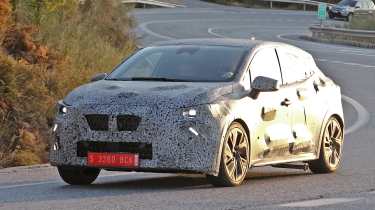
Engineering right-hand drive is another complicating factor, and is a key reason why small-selling big Renaults such as the Espace are not sold in the UK. The next Clio would arrive in British retailers in early 2027, meaning it would have a guaranteed three years on the market before the Government potentially bans sales of all new cars running combustion engines, even hybrids.
But with the Clio accounting for around 30 per cent of Renault UK’s 2024 sales, and decent profitability thanks to the company’s strategy of spreading costs over Renault, Dacia, Nissan and Alpine using pooled parts, it’s highly likely that the Mk6 Clio will be offered here. Especially as Renault is benefiting from Ford axing the barely profitable Fiesta: the Clio was the second best-selling small hatch in Europe last year, behind only its Dacia Sandero cousin in the sales charts.
One thing that’s certain is the sixth-generation Clio will be true to its sporty heritage. The swooping roofline drops away to the rear of the car, culminating in a spoiler and some sharp edges to reduce drag and improve economy.
The new design incorporates curvy wheelarches, showcased on the 2024 Embleme concept which teased the future of modern Renaults. The set-back headlamps with descending LEDs also take inspiration from the show car: “smart graphics” are part of Renault’s design philosophy.
Don’t expect lots of crease lines; the curves will provide most of the eye candy. Referencing Renault’s new design strategy, Vidal said: “We’re trying to go a long way with simplicity, generous surfacing and sharp graphics.” The ambition is to create cars that stand out from the crowd for their attractiveness and creativity.
The new Clio will run Renault’s latest infotainment, powered by Google and with voice control, access to apps, including the tech giant’s maps, and a highly customisable touchscreen. Renault is working towards a stepchange in graphical animations and haptic switches, but it remains to be seen whether it launches these on one of its lower-priced cars.
The brand’s ethos is to pack models with cutting-edge features without making them feel coldly technocratic. As such, the firm’s interior designers have developed soft, welcoming seats to make families feel at home, upholstered in sustainable fabrics. Recycled plastics and metals will also figure: Renault wants about 30 per cent of its cars by mass to be made from second-use materials by 2030.
So the new Clio is shaping up to be small but special. “[Renault design] is all about being memorable and meaningful,” said Vidal. “Everyone can make reliable, good cars but we want to make something that stands out and brings something fresh and interesting – for the right reasons.”
Come and join our WhatsApp Channel for the latest car news and reviews...
Find a car with the experts



